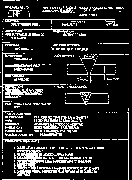| | |||||||||||||||||||||||||||||||||||||||||||||||||||||||||||||||||
 | |||||||||||||||||||||||||||||||||||||||||||||||||||||||||||||||||
| Welding Procedure Specification Example | |||||||||||||||||||||||||||||||||||||||||||||||||||||||||||||||||
| A WPS is a document that describes how welding is to be carried out in production. They are recommended for all welding operations and many application codes and standards make them mandatory What information should they include? Sufficient details to enable any competent person to apply the information and produce a weld of acceptable quality. The amount of detail and level of controls specified on a WPS is dependant on the application and criticality of the joint to be welded. For most applications the information required is generally similar to that recorded on a Procedure Qualification Record (PQR) or Welding Procedure Approval Record (WPAR), except that ranges are usually permitted on thicknesses, diameters, welding current, materials, joint types etc. If a WPS is used in conjunction with approved welding procedures then the ranges stated should be in accordance with the approval ranges permitted by the welding procedure. However careful consideration should be given to the ranges specified to ensure they are achievable, as the ranges given by welding procedure standards do not always represent good welding practice. For example welding positions permitted by the welding procedure standard may not be achievable or practical for certain welding processes or consumables. EN ISO 15609-1 (formally EN 288 Part 2) European Standard For Welding Procedure Specifications EN ISO 15609 Defines the contents of a Welding Procedure Specification in the form of a list of information that should be recorded. For some applications it may be necessary to supplement or reduce the list. For example only in the case of a procedure requiring heat input control would there be a necessity to quote travel speed or run-out length for manual processes. ASME IX American Boiler and Pressure Vessel Code QW 250 Lists the variables for each welding process, all the variables stated should be addressed. The range permitted by the WPS is dictated by the PQR or PQR’s used to qualify it. Typical Items That Should Be Recorded On W.P.S:- Common to all Processes .
A sketch of the joint configuration is required which should include the basic dimensions of the weld preparation. Some indication of the run sequence is also beneficial, particularly if the correct sequence is essential to ensure the properties of the weld are maintained. Production Sequence Whilst this is good practice it is not a requirement of either Non Destructive Testing A WPS is primarily concerned with welding not N D T, this activity should be covered by separate N D T procedures. |
Thursday, September 2, 2010
Welding Procedure Specifications
Posted by RAWING ANAK BADI at 7:22 AM
Subscribe to:
Post Comments (Atom)

0 comments:
Post a Comment